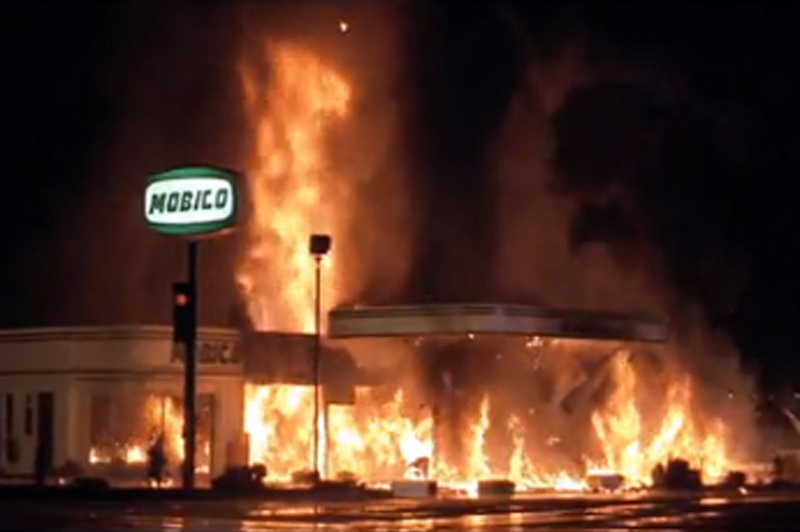
Andrew G. Fried
Even after a decade and a half of debate, we’re still learning new things about the proposed Cemex gravel mine in Soledad Canyon.
Here’s a doozy: The mine would pit the policies of several federal agencies against each other. In fact, it places the Bureau of Land Management in an unusual position, as the mine is inconsistent with its own policies.
This particular aspect of the story hasn’t gotten much public attention, but it’s becoming apparent that studies, plans and policies put forth by the BLM, the U.S. Forest Service and the National Park Service reflect unfavorably on the idea of placing a massive gravel mine in such an ecologically sensitive area.
Safe Action for the Environment Inc. is monitoring these studies carefully as we continue supporting efforts to stop the mine. The federal studies say what we’ve been thinking all along: Soledad Canyon is a special place that shouldn’t be subjected to the destruction a 56-million-ton mine would yield.
For example, the National Park Service has initiated the Rim of the Valley Corridor Special Resource Study to determine whether lands in the area should be designated as part of the national park system or added to the Santa Monica Mountains National Recreation Area.
The study is expected to be completed in 2014, but it has already identified the Upper Santa Clara River area – in which the mine would be located – as having nationally significant natural resources.

Click to enlarge
A Park Service update of the study said, “The Upper Santa Clara River contains some of the highest quality, least disturbed and biotically intact acreage of big-cone Douglas fir-canyon oak forest, riparian forest and woodland, coastal sage scrub and alluvial fan sage scrub. Invertebrate species diversity is very high with over 2,500 species.”
Why would we want a gravel mine in a nationally significant natural resources area?
The Rim of the Valley study isn’t the only piece of research from the Park Service that identifies the area as ecologically significant. This year, the Park Service completed the San Gabriel Watershed and Mountains Special Resource Study, establishing a San Gabriel unit of the Santa Monica Mountains National Recreation Area. The study identifies the Santa Clara River as “the last unchannelized riparian and wildlife corridor in the region.”
“The Santa Clara River functions as an important corridor between the mountains and the ocean,” the study says. “Protecting this corridor is a high priority for local and state agencies as well as conservation groups.”
The U.S. Forest Service has evaluated the area, too, concluding it is a vital link between two sections of the Angeles National Forest.
In 2008, the Forest Service was part of a coalition that developed the East Santa Clarita Land Conservation Concept Plan and Implementation Strategy, which concluded that the northern and southern sections of the forest should be connected to facilitate wildlife linkages and habitat preservation. The other participants were the city of Santa Clarita, Los Angeles County, Santa Monica Mountains Conservancy, Rivers and Mountains Conservancy and Vulcan Materials Co., a major property owner.
The plan set in motion the Angeles Linkage Conceptual Area Protection Plan, a strategic effort to purchase properties to link the two sections of forest. The proposed Cemex site is within the plan’s zone. The plan also recognizes the importance of the 2,663-mile Pacific Crest Trail, a portion of which is also within the CAPP zone.
Lastly, the BLM itself – the very agency that issued the contracts that would enable the mine to be developed – is nearing completion of the South Coast Resource Management Plan. It identifies eight potential new Areas of Critical Environmental Concern and – you guessed it – the Upper Santa Clara River Area, including more than 1,600 acres of BLM land, is one of them.
The draft report cites the river’s vital role as a wildlife corridor, and its roles in flood control and groundwater recharge. Interestingly, the Cemex mine site has been carefully carved from the map of the proposed Area of Critical Environmental Concern. This appears to be a political decision.
Hopefully the political concerns will be brought in line with the scientific ones.
SAFE advocates for the passage of S. 771, legislation by Sen. Barbara Boxer, D-Calif., and cosponsored by Sen. Dianne Feinstein, D-Calif. It would cancel the Cemex mining contracts with the BLM and fairly compensate Cemex for the value of those agreements via the sale of surplus federal land near Victorville. It’s a fair solution that would solve the problem for area residents and Cemex.
It has the added benefit of keeping federal actions consistent with the recommendations of not one, but three federal agencies.
If S. 771 doesn’t pass, what then? Will the federal government allow a mega-mine to be developed despite its own published concerns about the importance of preserving the environmental integrity of Soledad Canyon and the Santa Clara River?
Andrew G. Fried is president of Safe Action for the Environment Inc. For more information about SAFE and S. 771, visit www.Safe4Environment.org.
Like this:
Like Loading...
Related







 Tweet This
Tweet This Facebook
Facebook Digg This
Digg This Bookmark
Bookmark Stumble
Stumble RSS
RSS









































REAL NAMES ONLY: All posters must use their real individual or business name. This applies equally to Twitter account holders who use a nickname.
0 Comments
You can be the first one to leave a comment.